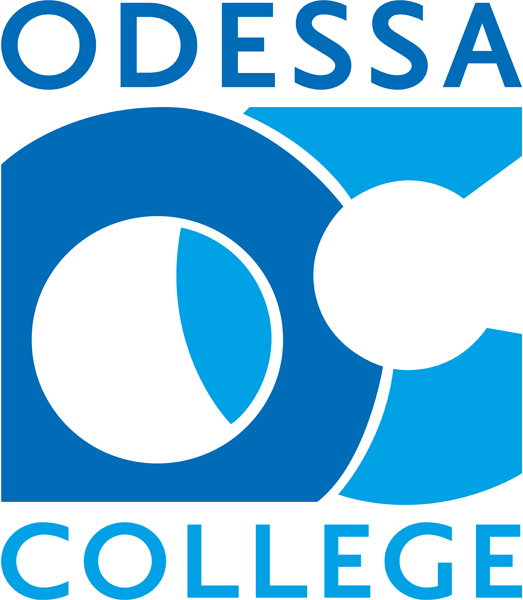Odessa College is part of a group of the top schools in the country focusing on getting students to and through college, into the workforce and into successful careers.
The Aspen Institute College Excellence Program and its partners at the Community College Research Center launched the first-of-its-kind initiative, the Aspen Institute website said.
Along with OC, colleges chosen are St. Petersburg College, Sinclair College, Tulsa Community College, Southwest Wisconsin Technical College, Valencia College, Laramie Community College, Monroe Community College, Alamo Colleges District-San Antonio College, and Lorain County Community College.
“It’s a really cool opportunity for 10 top institutions in the country to work together to look at post-graduation success and outcomes,” Vice President for Institutional Effectiveness Janice Hicks said.
“In the community college world for the longest (time), we were focused on enrollment. We wanted to get more students enrolled and we’ve done that for a while. That’s dipped in most institutions, (but) at Odessa College we’ve had record enrollment for the last nine years,” Hicks added.
Community colleges gave students access and got them enrolled, but there was a question of whether they were finishing their degrees and what happens after that.
“We really focus on retention and persistence and we still do a lot of that work. We’ll continue to do that work to increase the number of students who are being awarded their credentials — whether that’s a certificate, AAS or a bachelor’s degree,” Hicks said.
Now community colleges are shifting to what students do after they graduate. Community colleges are preparing them to work in the community, have a family sustaining wage, upward mobility and social mobility to have a better life than their parents.
“We’re excited because we get to be on the cutting edge of this work. We get to design how post-graduation outcomes look for community colleges across the country. That’s what the 10 institutions who were selected to be a part of Unlocking Opportunity get to do,” Hicks said.
She added that the effort is very localized.
Each institution will look at its community, find out what the family sustaining wage is, how they can get more students, particularly those from low-income areas and those who are historically underrepresented in college on to pathways, get them into the workforce, or get them transferred to University of Texas Permian Basin or another transfer institution.
Aspen Institute released the colleges for Unlocking Opportunities Feb. 7.
The schools meet mainly virtually and they get a coach. There will be some in-person meetings.
“There are components where in May we take a team of folks to Pittsburgh, which is where the first in-person convening will happen. All 10 institutions will bring their teams and will go over data. Right now, we’re gathering data, doing the pre-work to send to them. In the fall semester, they will have a team that comes to us. They’re going to come and do a site visit at each of the campuses. Our site visit, I think, is in September,” Hick said.
Each year, they will have an in-person convening, virtual meetings, and then they’ll do a site visit. The network will run for three years, but Aspen Institute and Community College Research Center will continue to collect data for three years after that.
Hicks said it’s not like routine data reporting.
“It is really looking at the data, implementing interventions within the three years and seeing how the data shifted and improved for our students. And then it’s packaging … and designing … post-graduation outcomes for the whole community college system … as a whole …,” Hicks said.
They are putting together data on programs. They have to categorize them, whether they’re credit or non-credit, by their value.
“We’ve been focusing a lot on credentials of value. There are high-value programs, medium-value programs (and) low-value programs, for the workforce. Then there are transfer, high value, transfer medium value (and) transfer low values. We’re in the process of looking at all of our programs, and really thinking about where they fit in terms of value and value for the student because we’re promising to the students if you come and you study when you do the right things you will be able to have access to … a family sustaining job. This makes sure that we’re accountable for that,” Hicks said.
A high value credential would be the nursing program, welding and automotive or diesel.
On the non-credit side, it would be the electrical lineman and commercial driver’s license programs.
“We’re in the process of doing the classifications of our programs, but we have many high-value programs,” she said.
A low-value program would be that when you transferred to a four-year school you find out that your credits don’t come with you.
She added that this could also be a way to increase enrollment.
“I think the better we get as we’re looking at our programs and are looking at it from the lens of a credential value and from the lens of post-graduation what do you do afterwards, the better we can articulate to students on the front end what the value proposition is in the programs that they select. I think it could impact enrollment; impact retention; persistence and really give us the opportunity to start to track what our students do after they leave,” Hicks said.
There are some programs like allied health and career and technical education that OC knows where the students go after they complete.
“Now we’re really focused in on the students who are in those liberal arts, in those transfer areas, to see where they go and how they fare after they leave us,” Hicks said.




